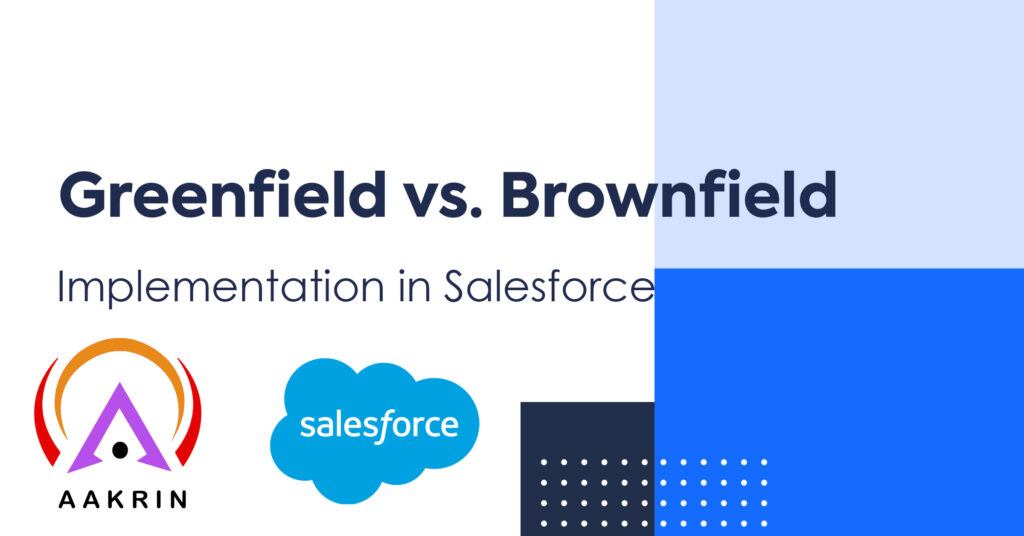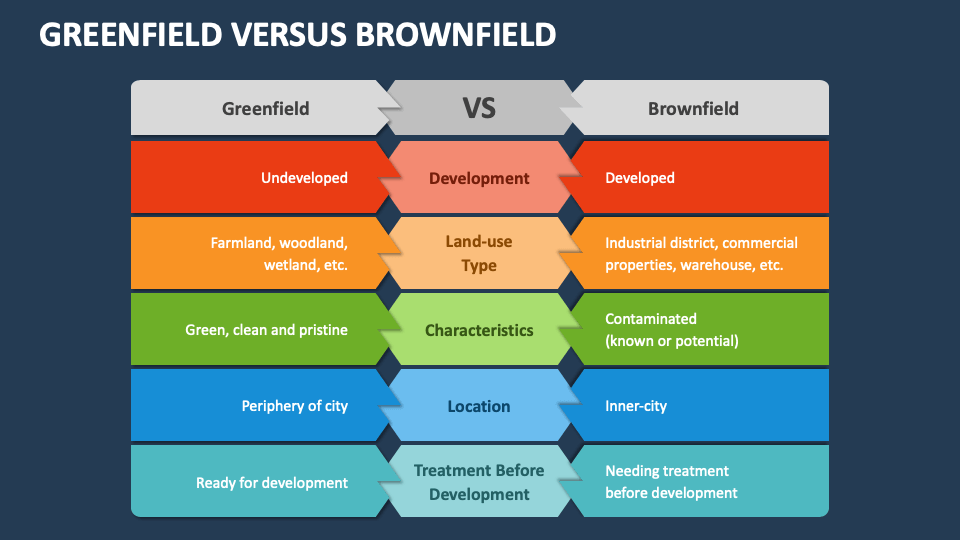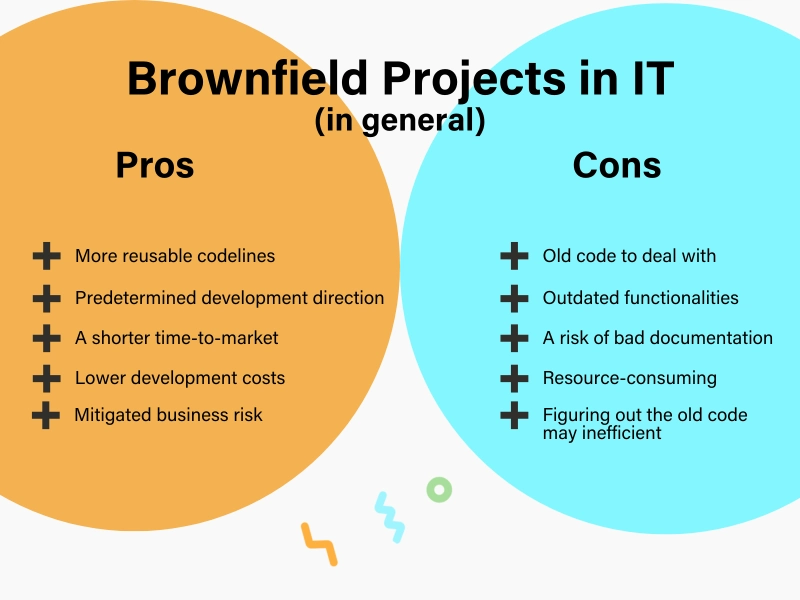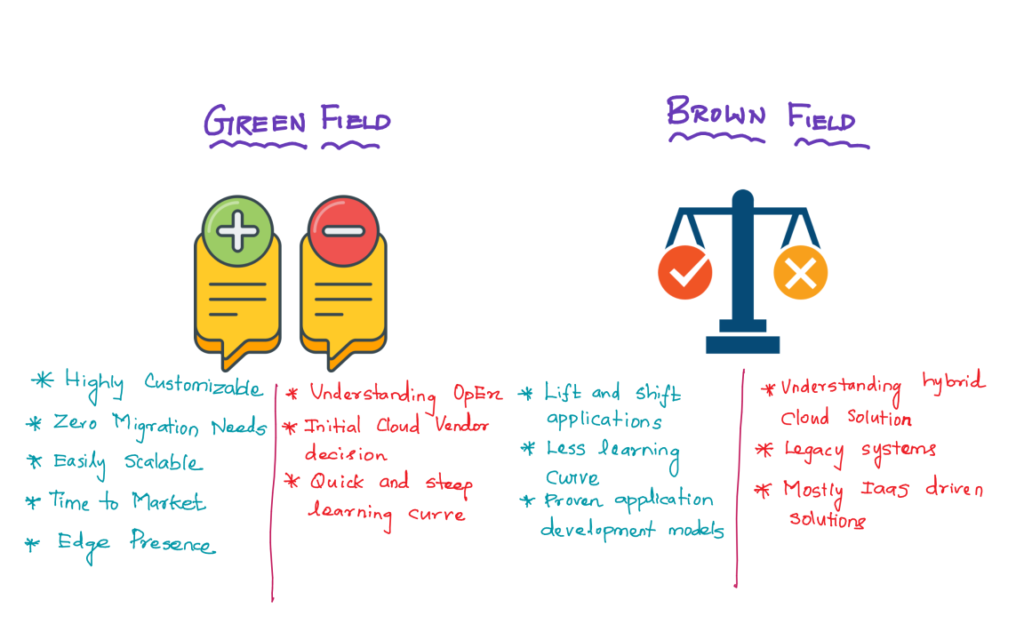
Choosing between greenfield and brownfield implementations in Salesforce is a crucial decision for organizations customizing their Salesforce setup. Each approach has its pros and cons, and the right choice greatly influences project success. This blog explains the differences and guides you to pick the best option for your organization.
What does Salesforce’s “Greenfield Implementation” mean?
If a company lacks a CRM platform and wants a fresh start with Salesforce, they should choose greenfield implementation. It allows customization of business procedures to match their needs.
What does Salesforce’s “brownfield implementation” mean?
If your enterprise has a strong CRM platform and wants to maximize Salesforce benefits, choose Brownfield implementation. This approach extends existing processes, aligning with the latest trends and technologies.
What distinguishes a Salesforce greenfield implementation from a brownfield implementation?
Implementation strategy
Greenfield implementation means starting fresh, allowing businesses to create a custom CRM platform without limitations from existing systems. In contrast, Brownfield implementation builds upon existing processes, updating them with each new Salesforce release to meet evolving customer needs.
Customization Potential
Greenfield Implementation allows designing data models, system architecture, interfaces, workflows, and automation from scratch. In contrast, existing data models and configurations limit customization in other implementations.
Scalability
Greenfield solutions offer extensive scalability options, meeting diverse requirements. However, integrating new processes might cause compatibility issues, requiring skilled personnel. Brownfield solutions ensure compatibility and user adoption but have limited scalability due to existing systems.
Timeline for Project Development
Greenfield projects progress quickly without existing limitations. Brownfield projects speed up due to preparedness, but adapting to new trends may cause delays.
Reusability of Code
In Greenfield projects, there’s no link to the old system, so code cannot be reused. The code is fixed and cannot be changed. Brownfield in Salesforce allows code reuse, enhancing functionality and tasks. Codes can be adjusted in unmanaged packages after installation for the app to work.
Initiative Risk
Greenfield projects might face risks due to new processes and experiments, leading to potential issues that may go unnoticed and impact the future. Brownfield projects, built on a stable foundation, are less likely to encounter significant problems.
Construction Cost
Greenfield implementation starts anew, creating everything from scratch, increasing development costs. Brownfield uses existing infrastructure, reuses code, and enhances current features, making it more cost-effective. These methods differ in approach and scope.
Greenfield Implementation: Starting from scratch, creating a new system without any previous limitations or infrastructure.
Brownfield Implementation: Modifying an existing system to accommodate new requirements.
Starting Point: Greenfield: Begins with a clean slate, allowing complete freedom in designing solutions. Brownfield: Begins with an existing setup, making changes and enhancements to the current system.
Complexity: Greenfield: More complex as everything is built anew, requiring new processes and integrations. Brownfield: Complex, involving modifications to existing structures and data models.
Time and Cost: Greenfield: Takes more time and resources due to building everything from scratch. Brownfield: More time and cost-effective, building upon existing infrastructure.
Data Migration and Integration: Greenfield: Involves straightforward data migration as there are no existing data structures to consider. Brownfield: Requires careful planning to integrate new data with existing structures.
User Adoption and Change Management: Greenfield: Requires extensive training and support as users are starting with a new system. Brownfield: Focuses on training users on new features and processes while leveraging their familiarity with the existing system.





Which Should I Choose: Greenfield or Brownfield?
Choosing the right Salesforce implementation (Greenfield or Brownfield) depends on your company’s needs, budget, timeline, and future plans. Consider your unique requirements and objectives carefully. Study both options thoroughly before making a decision.

| Parameters | Greenfield | Brownfield |
|---|---|---|
| Initial Approach | Start from the ground up. | Take place on current and already in-use infrastructure or systems. |
| Choice for Technology | You can choose per your project needs. | You need to continue with the already chosen technology. |
| Code Reusability | It also starts with new, so code reuse is impossible. | You can use the code of the legacy system as the implementation is done on the previous developer’s code. |
| Project Risks | With everything new, the risks always come along. There’s also the system that is prone to risks. | Here, there’s no risk as the setup is already stable. |
| Development Timeframe | It will take a little as everything will start from scratch. | As the improvement is made to the current system, developers may take longer to get adapted and complete the project. |
| Scalability | A new system will crop up with a wide scope of scalability. | With a legacy system, the scalability is also limited. |
| Compatibility | Obviously, there’s a compatibility issue with a new system. | An existing system will not face any such issue and will ease user adoption. |
| Customization Option | There’s no restriction in customizing a new system according to your project needs. | The existing workflows and infrastructure limit customization flexibility with a legacy system. |
| Data Conversion | Implementation will start from the ground, so, no need for data conversion. | Data conversion is necessary for a legacy system to migrate to Salesforce, ensuring data integrity and consistency. |
| Development Cost | It’s quite obvious that a fresh start demands everything to be set up, the system, code, development, implementation, etc. Resultantly, the development cost experiences a boost. | The code reuse, development, implementation, and more everything is feasible, so the development cost consecutively goes down. |
Final Note
We hope this post helped you understand the difference between Greenfield and Brownfield Implementation in Salesforce. Now, it’s crucial to choose the right approach for your business growth. Hire a reliable Salesforce implementation company with a successful track record and a skilled team. This will ensure smooth integration and timely results. Improve your business, boost sales, and revenue by connecting with a Salesforce Development company today.

